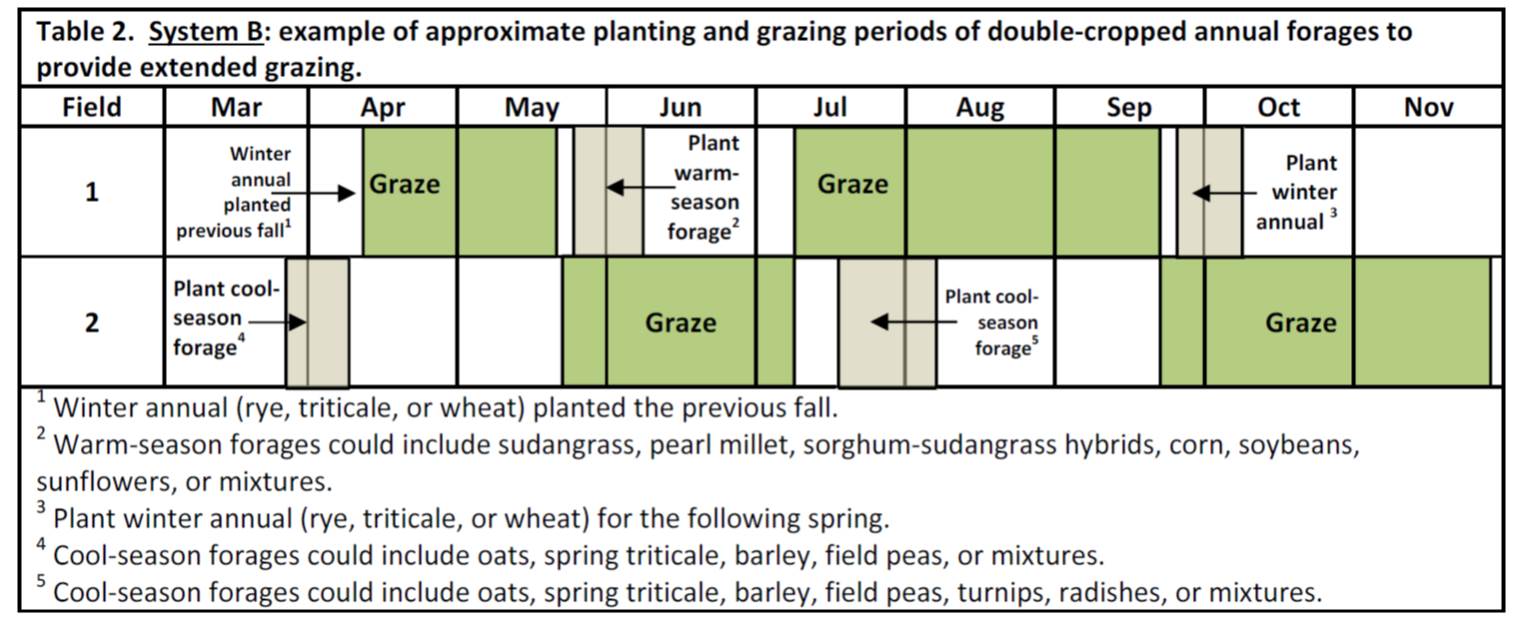Planning Annual Forage Systems
page 2
March 2016
System Development
Timing of planting is critical when trying to have an extended, continuous period with forage that can be grazed. Systems A and B (Tables 1 and 2, below) provide examples of suggested planting times and potential grazing periods for annual forages using multiple fields in the system. On these calendar tables, possible planting time windows are identified (tan shaded) that would result in the potential grazing periods (green shaded). Adequate moisture and other weather conditions are assumed.


System A can be used for starting an annual forage system in the spring and could be transitioned to System B with planting a winter annual in the fall when grazing the warm-season forage was complete.
With any of these plans, it is necessary to have access to additional forage resources such as a hay and an area to drylot feed or nearby permanent pasture where cattle could be moved if any number of circumstances caused a shortage in the amount of forage needed to continue grazing on the planted fields. Similarly, for each of the forage types, additional acres could be planted as a reserve for forage shortages and harvested for hay if not needed for grazing.
For each of the example systems, corn residue could be fed during the winter if available. If corn residue was not used or available, Table 1 includes an optional third field that could be planted to a small grain cereal in the spring, then harvested for hay or grazed until late June. A warm-season annual would then be planted and grazed as winter stockpile. An alternative to utilizing this as winter stockpile is to windrow it in September and directly graze the windrows during the winter months. More information on this management practice can be found in NebGuide G1616, Windrow Grazing (PDF version, 623KB).
Page 1 | Page 2 | Page 3 | Page 4 || View all
Jerry D. Volesky
Range and Forage Specialist
Nebraska Extension
Mary E. Drewnoski
Beef Systems Specialist
Nebraska Extension